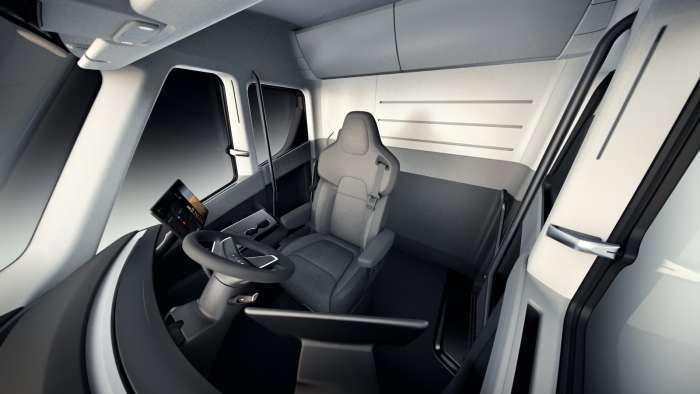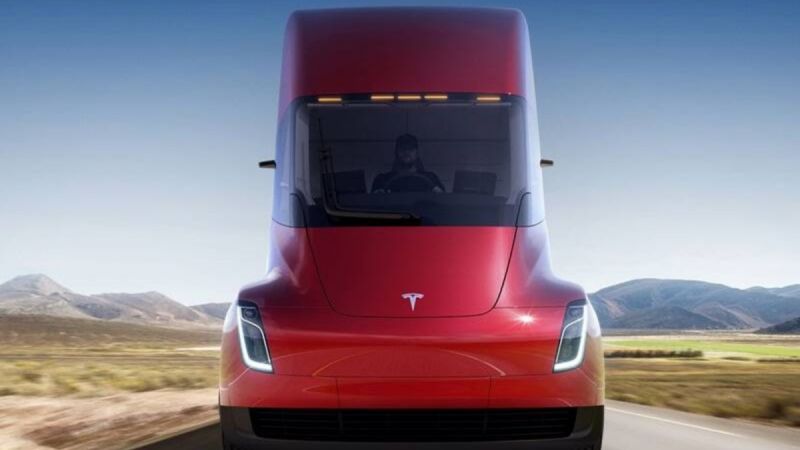The Semi was first mentioned in the Tesla 2016 Master Plan. Tesla said at the time that they had a working prototype that would use 'a bunch' of Tesla Model 3 electric motors. As of April 2017, Jerome Guillen had been leading the Tesla Semi program. Guillen was once in charge of Freightliner's Cascadia Diesel-engine Class 8 semi, before joining Tesla to configure the Model S production line, but left the Semi program a year later to lead one of the Model 3 general assembly lines and subsequently became Tesla president of automotive in September 2018. As far as I know, the new lead for the Semi program has not been publicly announced as of late 2019.

Tesla finally unveiled the Semi in 2017 with the promise of clean transportation in the commercial fleet. Deliveries of the vehicle were expected to start in 2021 even if the claimed range of 600 miles (1,000 km) might not be possible for at least a few more years. In fact, the truck was initially planned to begin deliveries in 2019, but it has been repeatedly delayed. Later in early 2020, CEO Elon Musk announced that the Semi’s range would sit at 600 miles. The massive per-charge range on the Tesla Semi may be made possible by making use of in-house batteries being developed in-house.

After its unveiling, the Semi was scheduled to arrive on roads in 2019 before being pushed to low-volume production in 2020. During a 2020 Q1 results call, Tesla again shifted its delivery window to 2021. Interestingly, despite multiple delays, Tesla has seen interest from major companies like Budweiser, Walmart, and UPS. Furthermore, the company was planning to deliver 15 Semis to PepsiCo by late 2021. In that regard, PepsiCo says that it is expecting those 15 Tesla Semi units by the end of the year, giving better insights into Tesla’s plan to produce and deliver the electric truck. The Tesla Semi program has been delayed several times, but it looks like the automaker is finally preparing to start production and deliveries.

The Tesla Semi has a capacity of 80,000 lbs (36,000 kg) and if its claimed range of 600 miles is proven, it would become the winner in long-haul journeys. "If you want, for long-range trucking, you can take the range up to, we think, easily 800 km (500 miles), and we see a path over time to 1,000 km (600 miles) range for an heavy duty truck," Musk was quoted as saying by Electrek.
He provided additional specifics. He claimed that the electric Semi would cost 20 ¢/mi (12 ¢/km) less to operate than a diesel truck if charged at a Megacharger, where Tesla would guarantee a price of 7 ¢/kWh (in the United States). If the Semi is not charged at a Megacharger, the savings would depend on the cost of electricity; the high cost in California, for example, may eliminate the operating cost benefit.
On the other hand, Musk said that the Semi would be equipped with Enhanced Autopilot as standard equipment, offering semi-autonomous capability. Using more radar devices and cameras than Tesla cars, the system would enable the truck to stay in its lane and a safe distance from other vehicles on the highway; have emergency braking; and warn the driver of any potential hazards near the vehicle.

The company also said that new technology with active safety controls would detect and prevent jackknifing. Musk said that the system would eventually allow several units to operate in an Autopilot-based convoy, led by a truck with a driver, that would be a cheaper alternative to rail transport. At the time, platooning was legal in only eight states and all required a human driver in each truck, so changes in legislation would be necessary to achieve Musk's vision.
In January 2021, Musk announced that Semi production would be delayed until the end of the year, as the company ramped up high-volume production of its tabless 4680 batteries (previewed in September 2020) to meet the demand for the Semi and other vehicles. At the 2021 Shareholder meeting, Musk announced that the production of the Semi would not start in 2021 and that it likely would slip into 2023.
As per the information available at the moment, other companies developing class 8 electric trucks include BYD Company, Daimler AG, Lion Electric Company, Kenworth, Nikola Motor, Peterbilt, Toyota, Volvo, and Xos (Thor). Other companies developing electric trucks, which are not class 8, include Cummins, DAF Trucks, Einride, Uber, and Volkswagen.
Nico Caballero is the VP of Finance of Cogency Power, specializing in solar energy. He also holds a Diploma in Electric Cars from Delft University of Technology in the Netherlands, and enjoys doing research about Tesla and EV batteries. He can be reached at @NicoTorqueNews on Twitter. Nico covers Tesla and electric vehicle latest happenings at Torque News.












